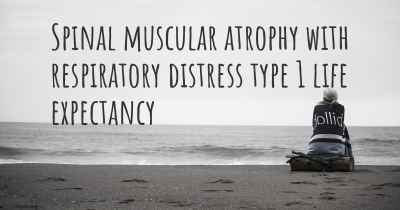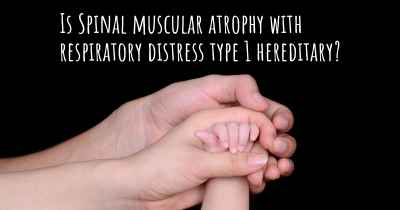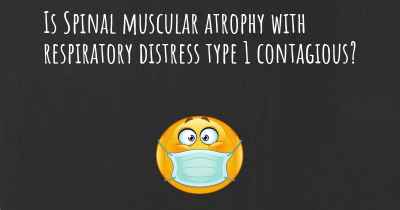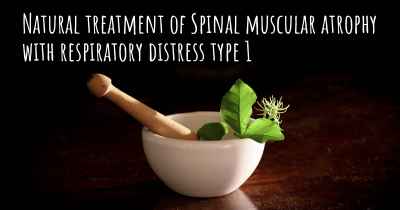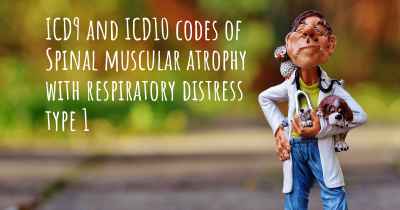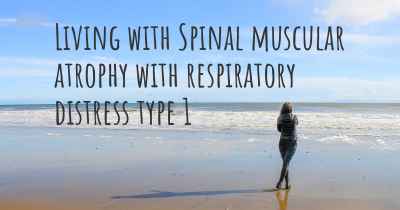Is it advisable to do exercise when affected by Spinal muscular atrophy with respiratory distress type 1? Which activities would you suggest and how intense should they be?
See if it is advisable for people with Spinal muscular atrophy with respiratory distress type 1 to practice sports and which ones are the most recommended if you have Spinal muscular atrophy with respiratory distress type 1
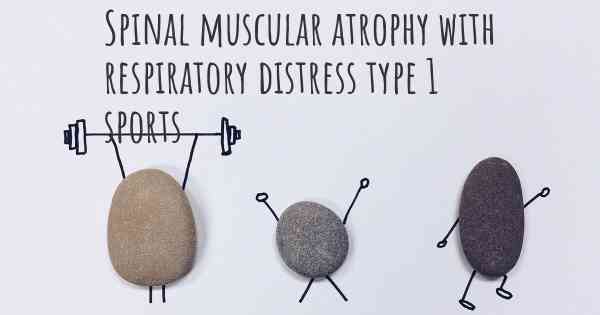
Spinal Muscular Atrophy with Respiratory Distress Type 1 (SMARD1) is a rare genetic disorder that affects the muscles involved in breathing and movement. It is characterized by progressive muscle weakness and respiratory difficulties, often leading to respiratory failure in infancy. Given the severity of the condition, it is crucial to approach exercise with caution and under the guidance of healthcare professionals.
While exercise may not directly improve the underlying condition, it can have several benefits for individuals with SMARD1. Physical activity can help maintain joint flexibility, prevent muscle contractures, improve circulation, and enhance overall well-being. However, it is essential to tailor the exercise program to the individual's specific needs and capabilities.
Low-impact exercises that focus on maintaining range of motion, flexibility, and muscle strength are generally recommended for individuals with SMARD1. These exercises should be gentle and avoid placing excessive strain on the muscles and joints. Some suitable activities include:
- Stretching: Gentle stretching exercises can help maintain flexibility and prevent muscle tightness. Focus on stretching major muscle groups, such as the legs, arms, and back.
- Range of motion exercises: These exercises aim to maintain joint mobility and prevent stiffness. They involve moving each joint through its full range of motion, such as bending and straightening the arms and legs.
- Water-based activities: Swimming or water therapy can be beneficial as the buoyancy of water reduces the impact on joints while providing resistance for muscle strengthening.
- Assisted exercises: Depending on the individual's capabilities, assisted exercises with the help of a physical therapist or caregiver may be beneficial. These exercises can target specific muscle groups and help maintain muscle strength.
It is important to note that the intensity of exercise should be low to moderate and should not cause excessive fatigue or respiratory distress. Each individual with SMARD1 will have different abilities and limitations, so it is crucial to consult with healthcare professionals to determine the appropriate exercise intensity.
Monitoring during exercise is essential to ensure safety and prevent overexertion. Regular assessments by healthcare professionals can help determine the effectiveness of the exercise program and make any necessary adjustments.
Additionally, it is crucial to consider the respiratory status of individuals with SMARD1 during exercise. Breathing difficulties are a hallmark of the condition, and any exercise program should be designed to minimize the risk of respiratory distress. This may involve incorporating breathing exercises or using respiratory support devices as recommended by healthcare professionals.
Overall, exercise can play a supportive role in managing the symptoms of SMARD1. However, it is essential to approach exercise with caution, tailor it to the individual's capabilities, and seek guidance from healthcare professionals. Regular monitoring and adjustments to the exercise program are necessary to ensure safety and optimize the benefits of physical activity.
